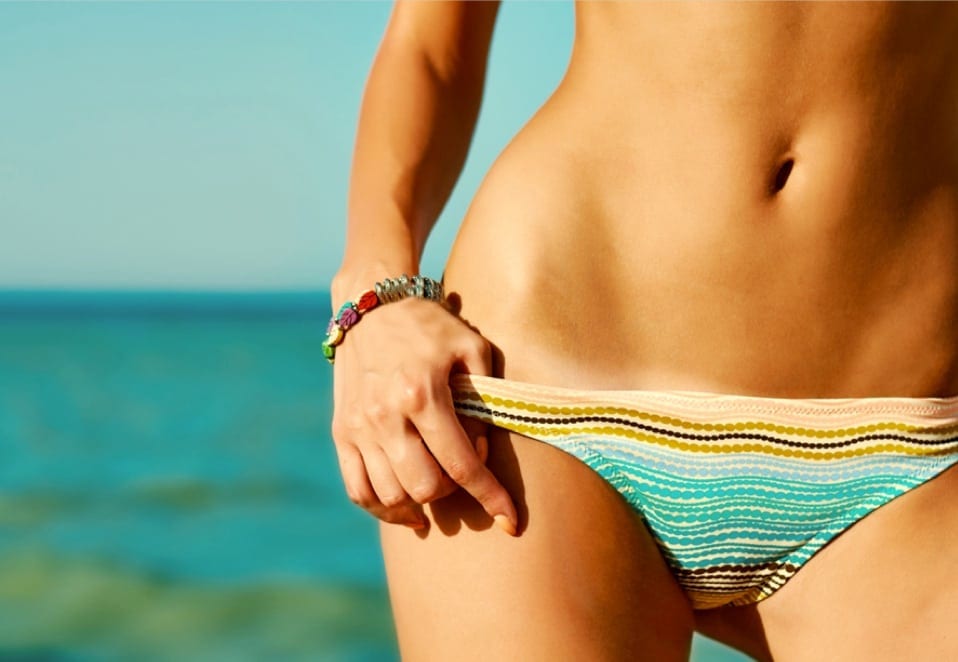The thighs are notorious for packing on excess fatty tissue. Proper diet and regular exercise help, but it’s not uncommon for some amount of extra fat to remain. Liposuction on the thighs offers a one-time procedure to eliminate bothersome fat and restore a trim, sleek contour to your thighs. Immediate results and short recovery times make liposuction one of the most popular cosmetic procedures performed in the United States. Read on to see if liposuction at New York Group for Plastic Surgery can help you achieve that slim and contoured “leggy” look you’ve always wanted.
How Does Liposuction Work?
As one of the most fat-concentrated areas of the body, the thighs naturally take on flab faster than other areas, particularly for women. While fat does serve as a cushion that protects muscles and bones, excess amounts can create the dreaded “saddlebag” effect. These fatty deposits along the inner and outer thighs can be especially resistant to the effects of diet and exercise. Liposuction helps to trim excess fat, giving the body a more balanced and attractive appearance.
A relatively simple procedure, liposuction uses a long, hollow tube, or cannula, that’s gently run along the underside of the skin, loosening fat deposits targeted for removal. Depending on the device used for the procedure, the fat may be dislodged using lasers, sound waves or motion, and then suctioned out. Once completed, the skin is pulled taut, leaving a smooth, trim appearance.

Benefits Of Liposuction
- Once removed, fat cells don’t “grow back,” so fat loss is permanent
- Enhances the shape and contour of the legs
- Immediate and noticeable results
- Treated areas will take on less fat should weight gain occur
Types Of Liposuction For The Thighs
Traditional Liposuction
Traditional liposuction uses the standard cannula and vacuum device to dislodge and remove fat tissue. An incision is made in the skin to accommodate the cannula, which then moves across the underside of the skin, loosening fatty tissue and suctioning it out. While effective, this method comes with the greatest risk, since the likelihood of discomfort and bruising runs considerably higher than with other methods.
Power-Assisted Lipo (PAL)
Power-assisted liposuction or PAL offers a less traumatic means for fat removal compared to the traditional method. The PAL device adds a vibrating tip to the cannula, which dislodges fatty tissue as it moves under the skin. The vibration is an automated motion that provides more precision and less disruption to surrounding skin and tissue. Power-assisted lipo requires a smaller incision as well so there’s less bruising, scarring and overall discomfort. These benefits combined enable PAL devices to remove up to 30 percent more fat than traditional lipo.
SmartLipo MPX
SmartLipo MPX uses a cannula and vacuum like the other two methods, but differs in that the cannula delivers laser energy into fatty deposits. The resulting effect liquefies the fat, which is then removed by the vacuum. The heat generated by the laser works to soften and liquefy fatty tissue, making for less discomfort during the procedure. The laser heat also tightens up the skin, producing a smooth, contoured effect on the thighs. Compared to traditional and Power-Assisted Lipo, SmartLipoMPX causes the least amount of discomfort with minimal bruising and swelling.
Liposuction Options: Target Areas
Cellulite can develop in different areas of the thigh, which has a bearing on which areas are treated with liposuction. Liposuction procedures can target the inner, outer and/or frontal portions of the thigh. Many women wish to have thinner thighs that don’t touch or rub together, so inner thigh liposuction is the most commonly performed procedure.
Outer thigh liposuction addresses the appearance of saddlebags, where excess fat builds up on the outer thighs and causes legs to look wider and disproportionate with the rest of the body. Frontal thigh liposuction, which is seldom done, involves suctioning fat from the deeper planes of the thigh to avoid creating an irregular contour. In most cases, frontal thigh liposuction is only done to maintain balance with the rest of the thigh when an inner or outer procedure produces less than favorable results.
What’s The Recovery Period Like?
Recovery periods from thigh liposuction vary from person to person based on the type of technique used and the number of areas treated. Liposuction does involve making incisions, so much of the recovery time centers on wound healing. The usual timeline for thigh liposuction recovery goes as follows:
- Week one – moderate swelling, bruising and pain, so little to no activity is recommended
- Week two – reduced swelling, bruising and pain; can return to work though limited movement is encouraged
- Weeks three to five – incisions are fully healed; minimal swelling, bruising and pain; moderate activity is ok
- Week six – can resume regular daily routine
If you’re considering getting liposuction on the thighs and have more questions, a one-on-one consultation with one of our board-certified plastic surgeons is a prime opportunity to see if this procedure is right for you. New York Group for Plastic Surgery specializes in a wide range of cosmetic enhancement procedures, so you have a wide selection of available options. Call our office today at 888-591-4845 to schedule a consultation.




